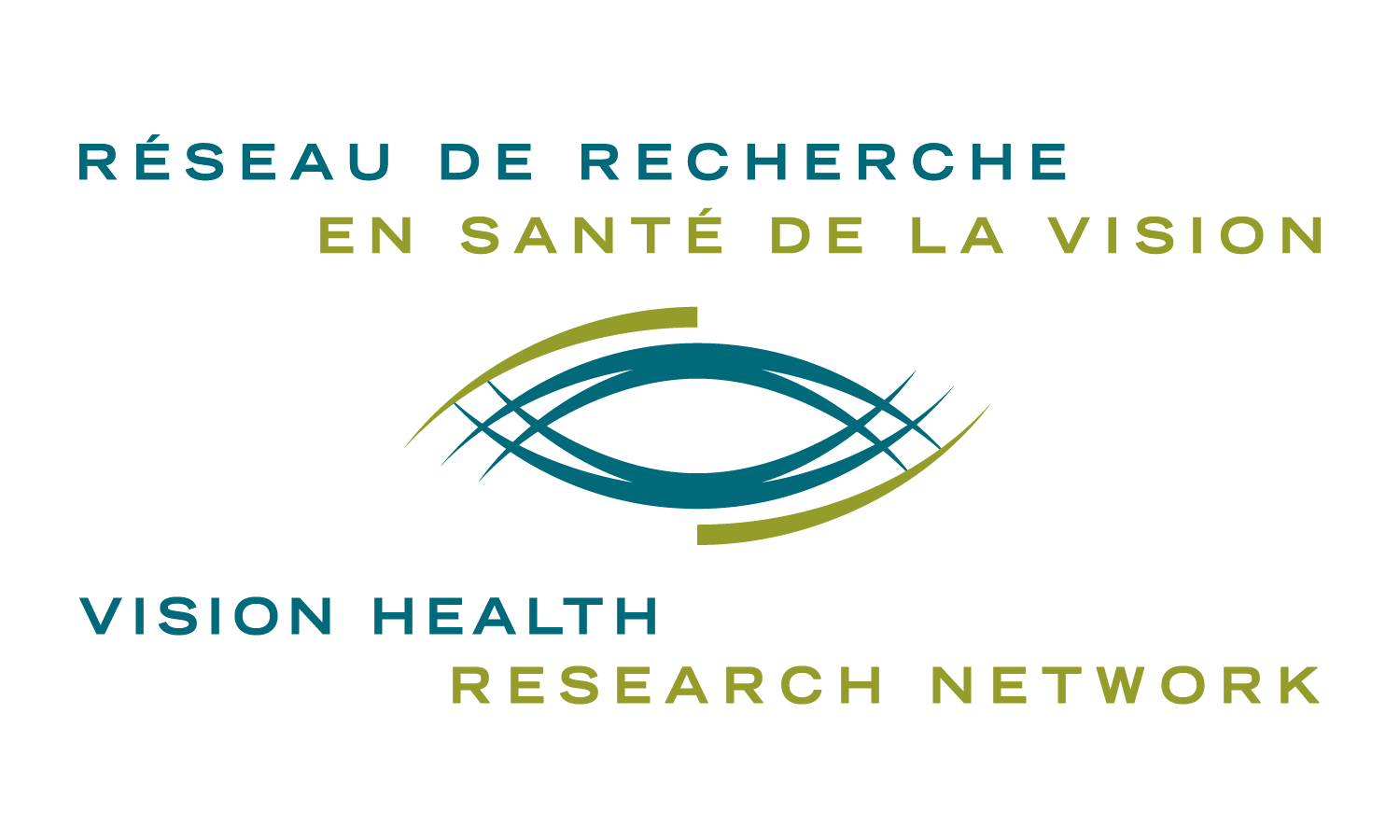2019-2020 Early-career funded researchers
For this first edition, the Network is pleased to announce that 4 researchers was awarded.

Alexandre Dubrac, PhD
Assistant Professeur since September 2018
CHU Sainte-Justine Research Center, Université de Montréal
Axis: Retina and Posterior Segment
Domain: Discovery research
Identifying vascular mural cells in the retinopathy of prematurity
Retinopathy of prematurity (ROP), the most common cause of blindness in children, is characterized by excessive neovascularization and hemorrhages. ROP is currently treated by vascular endothelial growth factor (VEGF) neutralizing antibodies, with limited therapeutic success1-5. It is crucial to identify new targets that could improve currently available treatments. During retinal angiogenesis, newly formed blood vessels are composed of endothelial tubes and the surrounding mural cells, such as pericytes. While much attention has been focused on endothelial cell, how pericyte dysfunction promotes the onset and progression of retinopathies remains unclear. We recently identified a novel pericyte paradigm in vasoproliferative retinopathy whereby pathological activated pericytes promote pathological angiogenesis in oxygen-induced retinopathy (OIR), a mouse model that mimics some aspects of the ROP. Activated pericytes appeared to be potential therapeutic targets for ROP. However, there are not specific molecular markers to target these cells. We propose to use state-of-the-art single cell RNA sequencing analysis to identify all vascular mural cells accurately in OIR, including activated pericyte. Therefore, unraveling new specific markers will allow us 1- to decipher the mechanisms controlling vascular mural cells identity and function in retinopathy, 2- develop new therapeutic inhibitors for the treatment of ROP, 3- to study activated pericyte in other neovascular ocular diseases such as the wet form of the age-related macular degeneration (AMD). Thus, this proposal is of great clinical relevance and is directly related to the objectives pursued by the RRSV and CHU Sainte-Justine Research Center, i.e. improving the vision of preterm babies.
***

Matthieu Vanni, PhD
Assistant Professor since August 2018
École d’optométrie, Université de Montréal
Axis: Brain and Perception
Domain: Discovery research
Development of a mouse model of cortical blindness using neurophotonics
After cortical damage, brain reorganization occurs and help to restore function. In visual brain, these damages can deteriorate variable aspects of vision because visual cortex is spatially organized in modules associated with different function: localization and identification of objects. Thus, there is a need to better understand the relationship between loss of brain regions and visual impairment to develop new therapeutic strategies. In this context, mice models are particularly adapted. Our goal will be to probe the function of different cortical territories of the mouse visual cortex by using optogenetics inactivation and explore how their function can change after stroke. Optogenetics is a new molecular engineering approach consisting of making neuron sensitive to light. After infecting brains with virus transporting a gene of a photoactivable protein, neurons can be spatially inactivated at high resolution using a transformed blue light videoprojector. The mice will be then trained to perform visual discrimination tasks associated with localization or identification of objects. The change in performance for the different visual tasks will be then quantified to identify the visual function of each module. Stroke in visual cortex will then be induced by using a photocoagulation methods. The evolution of the visual properties of different preserved territories will be then quantified to identify change of their function associated with the regain of visual performance lost after stroke. This project will provide a better understanding of the functional organization of mouse visual brain and will also offer a new way to test new treatment strategies.
***
The next two projects were also supported by the Fondation Antoine-Turmel.

Malika Oubaha, PhD
Assistant Professor since June 2019
Université du Québec à Montréal (UQAM), Département des sciences biologiques
Centre d’excellence en recherche sur les maladies orphelines, Fondation Courtois (CERMO-FC)
Axis: Retina and Posterior Segment
Domain: Discovery research
Role of developmental senescence in vascular plasticity during rare and common retinopathies
Blood vessels are among the first organs to develop in the embryo and are critical for tissue function and homeostasis. Postnatally, arteries and veins are considered terminally differentiated, but they retain enough plasticity to form new blood vessels.
We discovered recently in human mouse retina, senescent cells (that age prematurely) producing a series of factors that contribute to vascular regrowth. Our unpublished data, revealed features of premature senescence in fetal transitory vessels, called hyaloids, in the developing eye, that will regress be replaced by definitive retinal blood vessels. Interestingly, these senescent hyaloids of arterial origin are dynamic and can lose their original identity and acquire a vein identity. How developmental senescence partakes in arteriovenous identity switch during vascular eye development remains unanswered. My long-term goal is to decipher the cellular and molecular mechanisms that initiate and regulate senescence in the developing eye, and determine how this process influences vascular plasticity as needed for vascular growth in homeostatic conditions. Based on solid preliminary data (published and not yet published), this work will test the general hypothesis that senescence is needed in vascular eye remodeling, not only hyaloid vessels regression of but also for the subsequent growth of definitive retinal vessels. This pioneering study of the role of senescence in vascular plasticity hold a lot of promises for new therapeutic targets.
***

Luis Alarcon-Martinez, PhD
Post-doctoral Fellow at Dr Adriana Di Polo’s laboratory
University of Montreal Research Center (CRCHUM)
Axis: Retina and Posterior Segment
Domain: Discovery research
The role of pericytes in the vascular deficits during ischemic retinopathy
An appropriate communication between neurons and vessels is essential for a correct retinal function. During neuronal activity, the smallest vessels, the capillaries, may change their diameter to allow more or less oxygen and nutrients to feed demanding neurons. When the retinal blood flow is insufficient, retinal injury may occur, including vision loss and blindness. Strikingly, insufficient blood supply also induced permanent capillary constriction – even after restoration of the blood flow – and disruption of the blood retinal barrier, a wall that protects the retina from harmful materials located in the blood plasma. Nevertheless, the mechanisms behind these events are not completely understood. Recently, pericytes have been described as cells that may control capillary diameter. They are located around the capillaries and they are able to change their shape, constricting or dilating the vessels. Moreover, due to their location, pericytes are essential for the integrity of the blood retinal barrier. Here, we hypothesize that, during insufficient blood flow, pericytes constrict permanently capillaries, impairing the communication between neurons and vessels. This will lead to a decrease of oxygen supply and nutrients, inducing the breakdown of the retinal barrier, and, finally, retinal injury. Thus, our project will clarify how pericytes regulate blood flow and the integrity of retinal blood barrier during normal conditions and in retinal pathologies with an ischemic component such as diabetic retinopathy, retinopathy of prematurity, or occlusion of the ophthalmic vessels.
***


